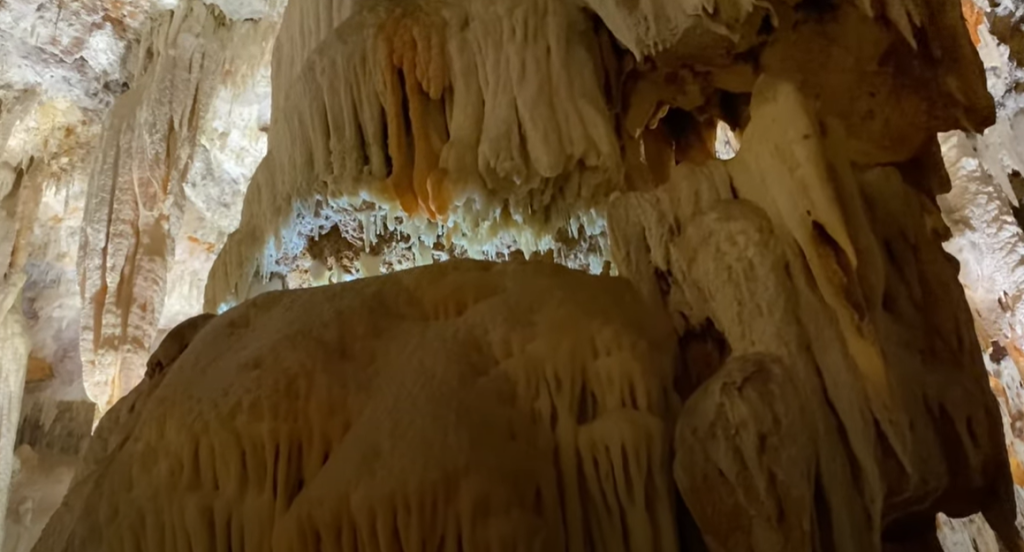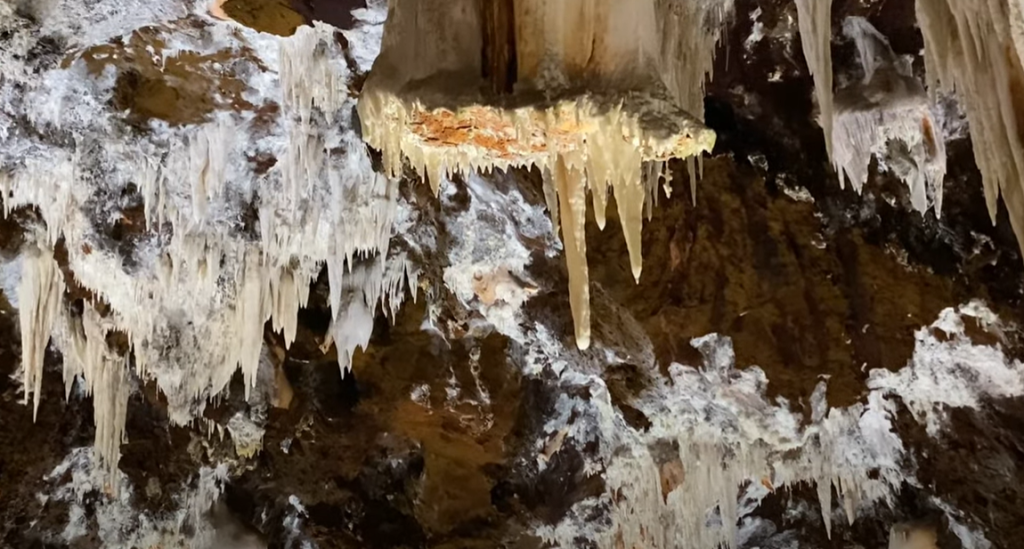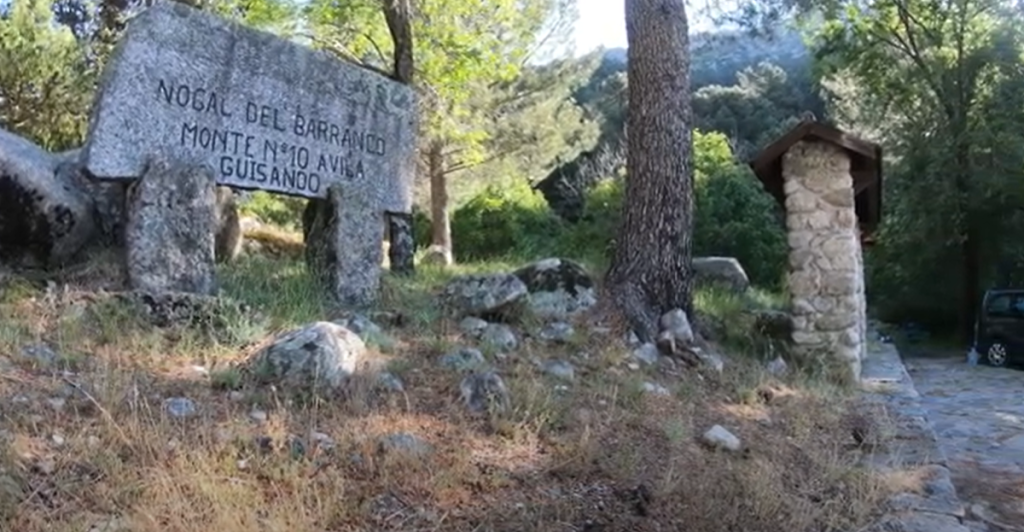Bored of the beach? Fancy a day out where you can feel like a proper explorer, without even needing to bring a torch? Then Cuevas del Águila in Spain’s Tiétar Valley might just be your new favourite hidden gem.
Nestled beneath Romperropas Hill—better known locally as Eagle Hill—these caves offer a magical underground experience that’s equal parts spectacular and surreal. And the best bit? They were discovered by accident by five local lads back in 1963… on Christmas Eve, no less.

An Accidental Discovery (and Quite a Story)
Picture the scene: it’s Christmas Eve, 1963. Five young lads are wandering the hills when they notice steam rising from a hole in the ground. Intrigued, and probably lacking in common sense, they squeeze through a tiny 60cm gap, armed with nothing more than ropes and torches.
After crawling through tight passages for about 50 metres, they emerge into an enormous underground vault, filled with colourful rock formations dripping from every surface. They then get lost for nearly five hours before eventually finding their way out—and the rest, as they say, is history.
Today, Cuevas del Águila are fully open to the public, with proper stairs, lighting, and thankfully, no need for crawling through tiny holes.

What You’ll See
The cave tour is a comfortable 40-minute walk covering around 1,000 metres of paved paths and stairs—though with plenty of humidity and slippery spots, good shoes are a must.
Inside, it’s a kaleidoscope of colour, thanks to the clever lighting which highlights the vivid stalactites and stalagmites. Formed over millions of years by underground rivers and rainwater seepage, the caves stretch about 50 metres deep and maintain a lovely 17°C all year round—perfect for escaping either the summer heat or the winter chill.
Geologists reckon the cave formations began between 500,000 and 1 million years ago, but the dolomite rocks surrounding the caves date back over 500 million years—making it one of Spain’s oldest underground marvels.

Useful Cuevas del Águila Visitor Info
- Opening Hours:
- Spring/Summer: 10:30am–1pm, then 3pm–7pm
- Autumn/Winter: 10:30am–1pm, then 3pm–6pm
- Admission: €8 per person (children under 5 go free)
- Guided Tours: Daily, every 30 minutes
- Location: Just outside Arenas de San Pedro, Ávila province
- Website: cuevasdelaguila.com
- Phone: +34 920 37 71 07
Tours are led by friendly guides who’ll fill you in on all the cave’s secrets, from its accidental discovery to the geological magic that created it.
What’s Nearby?
The caves sit right in the heart of the Tiétar Valley, part of the stunning Sierra de Gredos region—an area packed with hiking trails, rivers, and panoramic views.
You’ll also find plenty of fantastic places to eat nearby, serving up hearty local dishes like Chuletón de Ávila (massive T-bone steaks) and Patatas Revolconas (smoky mashed potatoes with paprika and pork bits). There’s even a restaurant right by the caves where you can refuel after your adventure.

Adventure Awaits Above Ground Too
The Sierra de Gredos Regional Park surrounds this whole area, and Miguel de Unamuno called it the “stony heart of Spain” – which sounds intimidating but is actually incredibly beautiful. The park is perfect for hiking, with trails leading to glacial lakes, dramatic gorges, and the impressive Almanzor Peak at 2,592 meters.
If you’re more of a cycling enthusiast, the Bajo Tiétar Mountain Bike Center can point you toward routes that’ll take you through some of the most stunning mountain scenery in Spain. And for something completely different, you can explore the region on horseback – there’s apparently a long equestrian tradition here, and several companies offer guided rides through the most remote and spectacular natural sites.
Final Thoughts
Cuevas del Águila isn’t your average tourist attraction—it’s a magical underground world full of history, geology, and accidental heroics. Whether you’re here for the spectacular stalactites, the cool temperatures, or just to say you’ve visited a cave discovered by five nosy lads on Christmas Eve, it’s well worth the trip.
One thing’s for sure—you’ll leave with a new appreciation for the weird and wonderful landscapes hiding beneath Spain’s surface… and possibly a craving for a large steak and a cold beer afterwards.



